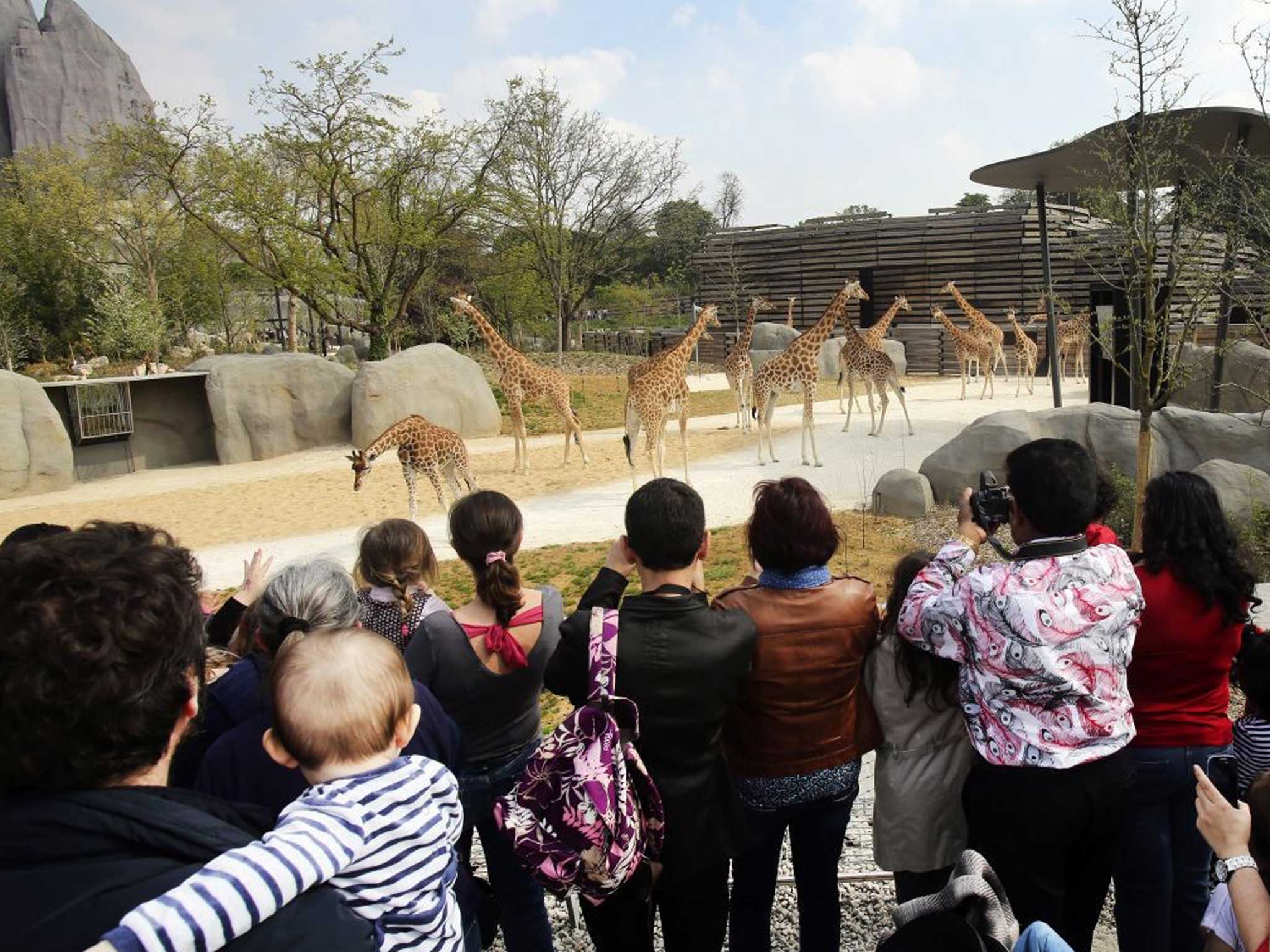Paris unveils its new ark de triomphe - the city's new natural-habitat zoo
Giraffes walk tall, lions enjoy outdoor central heating, tortoises stretch their legs and even architects are captivated

The lions have outdoor central heating. They will not be eating the giraffes. The first completely rebuilt – and re-thought – city zoo opened in Paris yesterday. At a time when the very existence of zoos has been called into question by the slaughter of a young giraffe in Copenhagen, the new Paris zoo claims to be the most humane – and the most ecologically and biologically correct – urban animal park in the world.
The 80-year-old zoological gardens on the eastern edge of the city, which closed six years ago, have been redesigned and rebuilt. The new zoo is divided into five climactic or geographical "biozones" in which the appropriate animals live side by side, sometimes sharing the same enclosures.
None of the 1,000 animals from 180 species have been captured in the wild. All will live in large spaces resembling their natural habitats. The lions will have a form of central heating built into artificial rocks to make the climate of northern France more like the African Savanna.
"The 19th- and 20th-century concept of a zoo was a collection of animals, chosen to be as exotic as possible," said Thomas Grenon, director of the French natural history museum which operates the zoo. "The new Paris zoo is a kind of journey of discovery where you can grasp that the animals are part of a single ecosystem – or five different ecosystems – which survive or decline as a whole."
However, there was no room for an Asia biozone, so there are no tigers or gibbons. Space in "Sahel-Sudan" and "Europe" was limited, so there are no elephants or bears. The scale of the enclosures means that animals are not always immediately visible. The new zoo is, nonetheless, a delight. Even those people who normally hate zoos might think again.
One of the most spectacular creations is an immense, curving, glass house, as long as a football pitch, which brings the rainforests of Guyana and Madagascar to northern Europe. Birds, snakes, monkeys, lemurs, tortoises, caimans and a huge manatee live uncaged in this glass bubble, beside an artificial tropical river and pool.
Alexis Lécu, chief vet and scientific director of the Paris zoo, says that one of the standard criticisms of zoos – that it is cruel to cage animals from the wild – no longer applies. Modern zoos send animals back to the wild to replenish threatened species. The only formerly wild animals in the new Paris zoo are a handful of exotic birds which were confiscated from smugglers.
Take, for instance, Nero the male lion. He has never been to Africa. He was born in the Czech Republic and then spent most of his life in Montpellier in the south of France. He will soon be joined by three European-born lionesses.
But are the animals happy? "Happiness is a very human concept," Mr Lécu replied. "How can you tell if a cricket is happy? Or a rhinoceros? All I can say is that we have done everything possible here to allow the animals to live as they do in their natural habitats."
When it opened in 1934, the Paris zoo was one of the first in the world to banish cages and iron bars in favour of open enclosures. The old zoo boasted artificial rocks and mountains made of concrete, which, by 2008, were falling apart. The zoo was closed for a €170m (£140m) rebuild.
The new zoo has thousands of new bushes and trees from the five biozones. Only le grand rocher, the biggest artificial mountain – the zoo's emblem – has survived. Ranges of new fake rocks have been built in the same style.
And what of the giraffes? There was anger in February when it emerged that the Copenhagen zoo had killed a "surplus" young giraffe and thrown its meat to the lions.
Mr Lécu said: "I'm not going to comment on what happened at Copenhagen zoo, but that would not happen here. Yes, there is a surplus of giraffes in European zoos at present, but you can manage that situation by stopping the females from becoming pregnant.
"We, in fact, have female giraffes which have proven to be very good mothers. We hope to exploit that by making them surrogate mothers for several threatened sub-species of giraffe." The giraffes were the only species to remain in the Paris zoo throughout the six years of its closure and its three years of rebuilding. They were too big to move.
Subscribe to Independent Premium to bookmark this article
Want to bookmark your favourite articles and stories to read or reference later? Start your Independent Premium subscription today.

Join our commenting forum
Join thought-provoking conversations, follow other Independent readers and see their replies